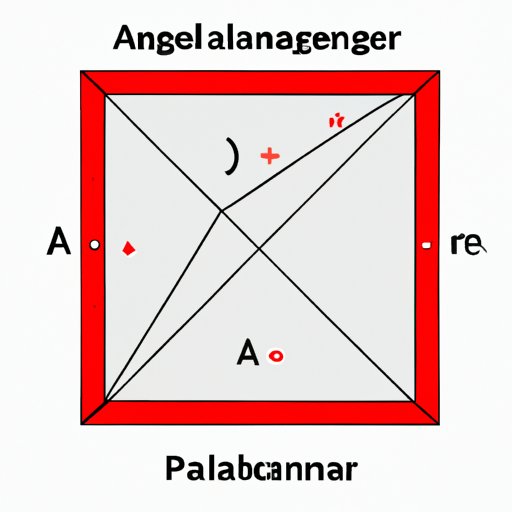
I. Introduction
Parallelograms are essential geometric shapes that have many real-world applications. From architecture to engineering, it is crucial to understand how to find the area of a parallelogram. In this article, we will explore the concept of parallelogram area and the different methods of solving problems related to it.
II. A Step-by-Step Guide on Finding the Area of Parallelogram
The area of a parallelogram is the measure of the space inside the shape. It is expressed in square units like square meters, square feet, etc. The formula for finding the area of a parallelogram is:
Area = base x height
To calculate the area of a parallelogram, follow these simple steps:
- Determine the base and height of the parallelogram.
- Multiply the base by the height.
- The product of the base and height yields the area of the parallelogram.
III. Mastering the Art of Finding Parallelogram Area: Tips and Techniques
Many students struggle with finding the area of a parallelogram because of the complexity of its formula. Here are some tips to make the calculation easier:
- Always make sure to use the correct units for base and height. You cannot multiply a value in meters with a value in feet.
- Use brackets to simplify complex expressions in the formula.
- Draw diagrams to help visualize the problem.
- Work on simplifying fraction expressions to avoid errors while calculating.
Techniques for solving more complex parallelogram area problems include:
- Divide the parallelogram into smaller, more manageable shapes, and calculate the area of those shapes separately.
- Use trigonometry to determine angles and side lengths.
IV. Everything You Need to Know About Calculating the Area of a Parallelogram
The formula for finding the area of a parallelogram is straightforward and easy to remember. By multiplying the base by the height, you get the area. Here are some examples of parallelograms and how to calculate their areas:
Example 1:

Base = 10 cm
Height = 5 cm
Area = 10 cm x 5 cm = 50 cm2
Example 2:

Base = 6 m
Height = 7 m
Area = 6 m x 7 m = 42 m2
V. The Formulas, Methods, and Tricks to Find the Area of a Parallelogram
While the formula base x height is the standard method of calculating the area of a parallelogram, there are other formulas and tricks that you can use to solve these problems:
Alternative Formulas:
- Area = (1/2) x a x b x sin(C); where a,b are sides of parallelogram and C is the included angle between a and b.
- Area = (1/2) x d1 x d2; where d1 and d2 are the diagonals of the parallelogram.
Shortcut Tricks:
- If two parallelograms have the same base and height, their areas will be equal.
- The area of a parallelogram is equal to the area of a rectangle with the same base and height.
VI. Understanding the Concept of Parallelogram Area: Techniques for Easy Calculation
The concept of parallelogram area might seem difficult to understand at first, but with the right approach, it can become much more manageable. Here are some helpful techniques to keep in mind:
- Imagine that you’re pouring sand into the parallelogram and measuring how much sand is inside. This visualization helps to understand the concept of area better.
- Break the parallelogram into smaller rectangles and triangles to make the calculation easier.
- Repeating the calculation of the area of a parallelogram with different values until the formula becomes intuitive.
VII. Conclusion
Finding the area of a parallelogram is a fundamental concept in geometry. While the formula might seem intimidating at first, by following the guide we provided, anyone can become a pro at parallelogram area.




